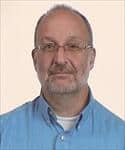A group of UAMS researchers is the first to deposit directly sequenced RNA to the National Center for Biotechnology Information databases, made possible by their utilization of a novel, handheld genetic sequencing technology.
The federal government maintains a collection of databases with the aim of advancing science and health by providing public access to biomedical and genomic information. One of the largest and fastest growing databases is GenBank, which contains an annotated collection of all publicly available DNA sequences, as well as inferred RNA and protein sequences.
The work was published in the Jan. 13, 2018, edition of Nucleic Acids Research. The UAMS team was led by Intawat Nookaew, Ph.D., associate professor, and David W. Ussery, Ph.D., professor, both of the Department of Biomedical Informatics in the UAMS College of Medicine.

“Nearly all of the sequences included in the database have been DNA, which is easier to sequence,” Nookaew said. “Most RNA sequences in the database are sequenced DNA copies of the RNA. But thanks to a new disposable ‘lab-on-a-chip’ technology, we were able to successfully complete an RNA sequence and deposit it into the database.”
The UAMS team deposited the complete DNA sequence of all 16 chromosomes, as well as more than 6,000 full-length messenger RNA sequences for a common strain of yeast.
The team used an Oxford Nanopore MinION flow cell, which is a handheld, real-time microfluidics device that can be used to sequence DNA or RNA for research projects like this one, as well as for clinical applications like identifying pathogens from clinical isolates. The MinION flow cells have been on the market since 2015, and have been adopted by scientists and researchers across the world who are still exploring its potential.

“Using it to sequence RNA, which has been difficult by traditional means, is just one of many uses,” Ussery said. “The technology also has many clinical implications. For example, it could be used to learn more about chromosome rearrangements and gene expression in cancer cells. Understanding more about the how and why gets us closer to the cures, and handheld genomics devices will likely advance personalized medicine.”
The first author position on the publication was jointly shared by two UAMS postdoctoral fellows, Piroon Jenjaroenpun and Thindathip Wongsurawat. Other members of the team include former UAMS research associate Preecha Patumcharoenpol, Rui Pereira, a postdoctoral fellow from Chalmers University, and Jens Nielsen, professor of systems biology of Chalmers University of Technology in Gothenburg, Sweden.
The field of biomedical informatics uses computational tools to assess and manage medical and public health information, with the goal of improving individual health, health care, public health and biomedical research.
Fred Prior, Ph.D., chairman of the Department of Biomedical Informatics, said research like that of Nookaew’s demonstrates why biomedical informatics is so important and why it is on the cutting edge of science.
“Dr. Nookaew and his team did something unprecedented using a new technology, and that technology produces a massive amount of data, which has now been added to a growing database of public data,” Prior said. “Biomedical informatics gives us the analytical, computational ability to harness the power of this data-rich world in which we now live.”
UAMS offers three graduate degrees in biomedical informatics – Doctorate of Philosophy, Master of Science and a Professional Master’s – and a Graduate Certificate Program.
